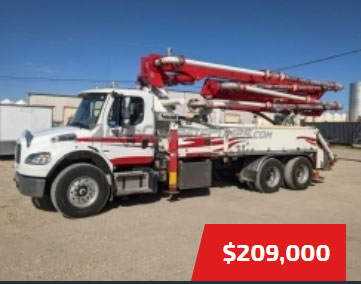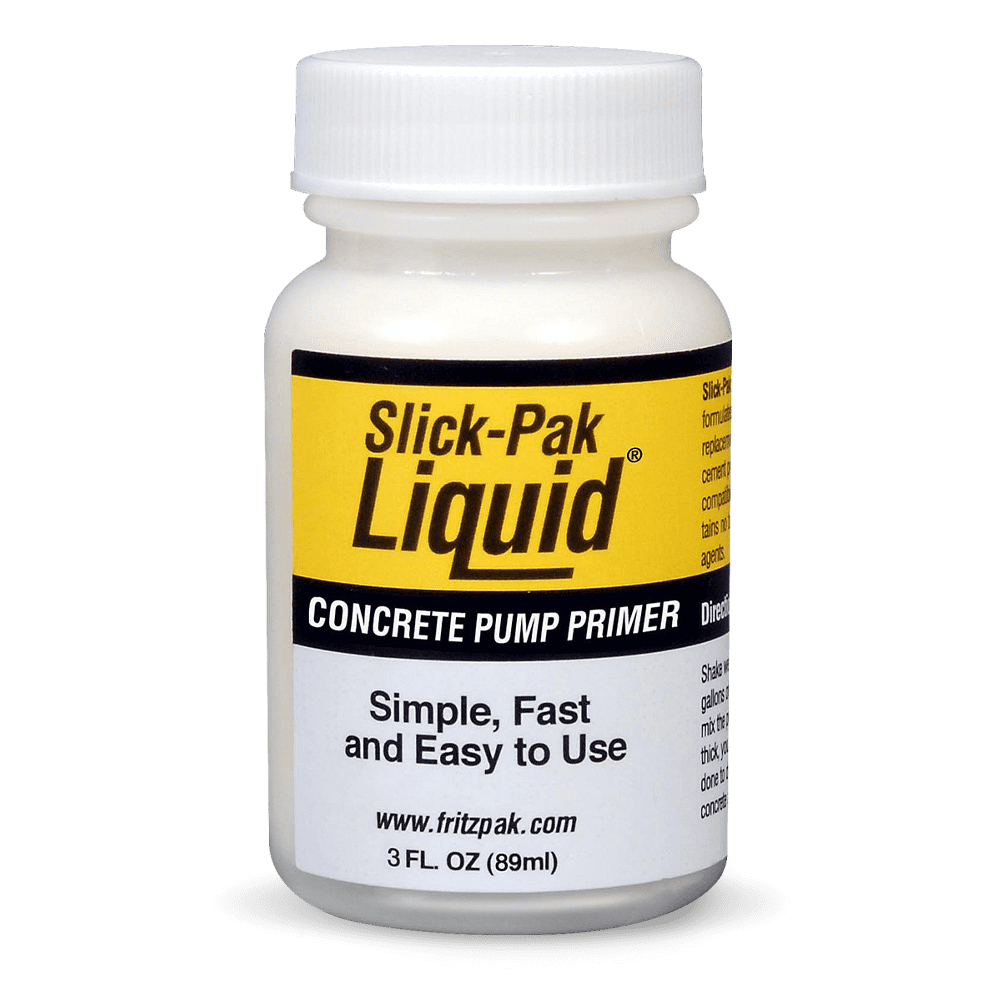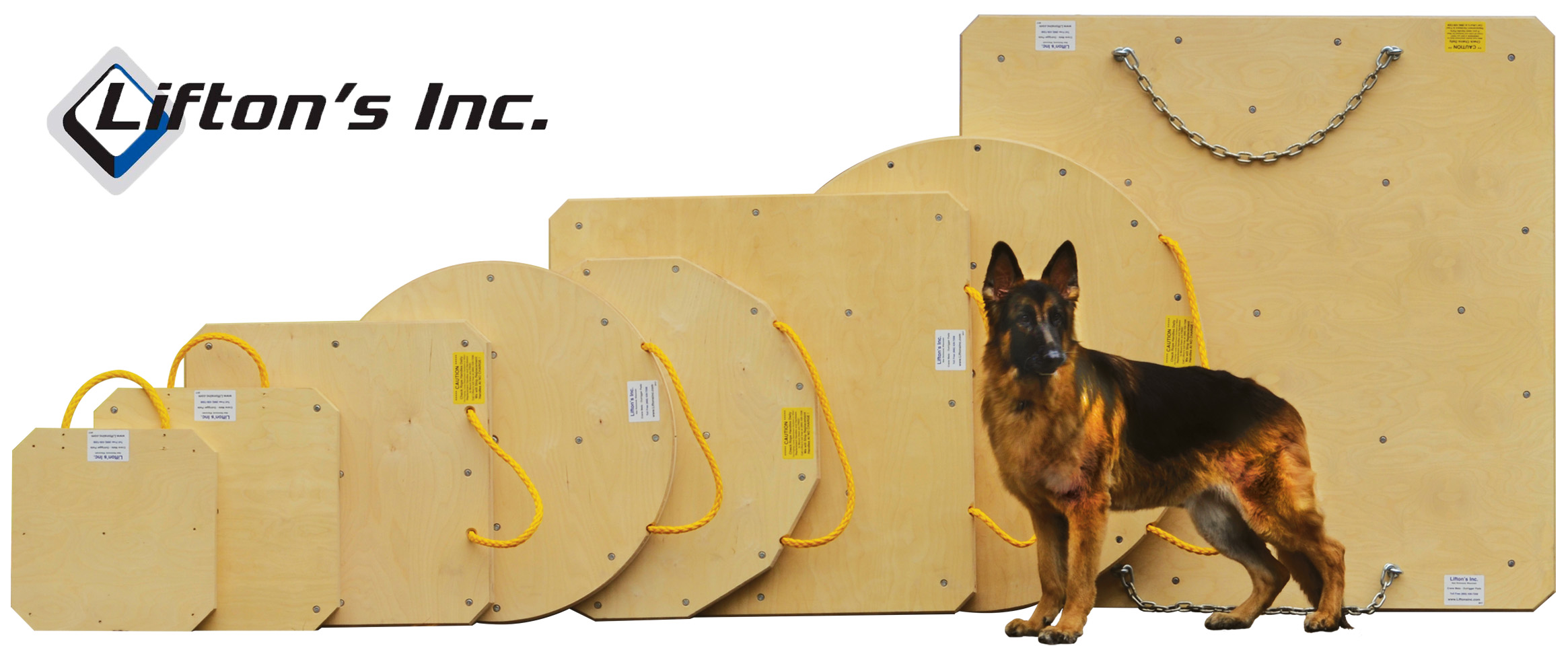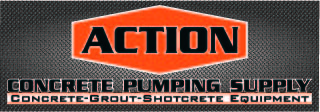Concrete Pump Accident Investigation

Worker dies after being thrown back by concrete pump hose.
A concrete pump truck was pumping concrete into the walkway of a house while a worker held the end hose. The rubber hose was 20 feet (6 metres) long and had a coupling device attached at the end. The operator of the concrete pump truck saw that the concrete had stopped flowing out of the hose. He pushed the emergency stop button and the pumping stopped. However, compressed air trapped in the supply line behind a blockage forced the blockage to clear suddenly. Concrete burst out of the hose, causing the hose to whip out. The worker holding the hose fell backwards. He struck his head on a piece of scrap lumber and later died of his injuries.

Purpose of this report.
The purpose of this online incident investigation report is to identify the causes and contributing factors of this incident to help prevent similar incidents and to support preventive actions by industry and WorkSafeBC. This online version is not the official WorkSafeBC report. It has been edited to remove personal identifying information and to focus on the main causes and underlying factors contributing to this incident.
Notice of Incident information Number: 2007105910285
Outcome: Fatal
Core activity: Concrete placing and finishing Region: Lower Mainland Date of incident: November 2007
Table of Contents
1 Factual Information...............................................................................................3
1.1 Firms............................................................................................................................3
1.1.1 A-1 Concrete Ltd..............................................................................................3
1.1.2 U.K. Concrete Pump Ltd..................................................................................3
1.2 The worksite..................................................................................................................3
1.3 The incident..................................................................................................................3
1.4 Workers’ training and experience.................................................................................6
1.4.1 Concrete Workers 1 and 2.................................................................................6
1.4.2 Concrete Pump Operator...................................................................................6
1.5 Concrete pumping.........................................................................................................6
1.5.1 Equipment.........................................................................................................6
1.5.2 Blockages..........................................................................................................6
2 Analysis..................................................................................................................7
2.1 Blockage and eruption of concrete out of end hose......................................................7
2.2 Length of end hose........................................................................................................7
2.3 Workers’ training and experience.................................................................................8
2.3.1 Concrete Workers 1 and 2.................................................................................8
2.3.2 Concrete Pump Operator...................................................................................8
2.4 Communication.............................................................................................................8
2.5 Safety headgear.............................................................................................................8
3 Conclusions...........................................................................................................8
3.1 Findings as to causes.....................................................................................................8
3.1.1 Striking head on corner of lumber debris.........................................................8
3.2 Findings as to underlying factors..................................................................................9
3.2.1 Sudden release of blockage while pumping concrete.......................................9
3.2.2 End hose that exceeded manufacturer’s recommended length.........................9
3.2.3 Inadequate training and experience..................................................................9
3.2.4 Inadequate communication...............................................................................9
4 Orders Issued after the Investigation..................................................................9
4.1 Orders to U.K. Concrete Pump Ltd..............................................................................9
5 Health and Safety Action Taken.........................................................................10
5.1 WorkSafeBC...............................................................................................................10
1 Factual Information
1.1 Firms
1.1.1 A-1 Concrete Ltd.
A-1 Concrete Ltd. had been established about a year before the incident. Before their work with A-1 Concrete, both Concrete Worker 1 and Concrete Worker 2 had learned the trade during previous work experience as concrete finishers.
1.1.2 U.K. Concrete Pump Ltd.
U.K. Concrete Pump was established three years before the incident. At that time this firm bought one concrete pump truck and then hired the Concrete Pump Operator to drive and operate it.
1.2 The worksite
The incident occurred in a neighbourhood of single family homes under development. The pouring of concrete for the patio and walkway of a house under construction was scheduled for the day of the incident.
1.3 The incident
The day of the incident was the first time that A-1 Concrete and U.K. Concrete Pump worked together. On the morning of the incident, U.K. Concrete Pump arrived at the worksite and set up the concrete pump truck to pump concrete so that A-1 Concrete could place and finish a driveway. Once this job was finished, Concrete Workers 1 and 2 and the Concrete Pump Operator — along with the first concrete supply truck of the day — relocated to another house under construction (see Figure 1). The Concrete Pump Operator pumped the remaining concrete (about 2 metres) from the first supply truck at this house, and Concrete Workers 1 and 2 placed and finished concrete on the front porch, not quite completing the porch.

Figure 1: The worksite with the concrete pump truck next to the house whose porch and walkway were being poured.
A second concrete supply truck arrived to refill the concrete pump truck so that the porch could be finished and the walkway poured. After Workers 1 and 2 completed the porch, the Concrete Pump Truck Operator stopped pumping and relocated the boom to pump concrete for the walkway. After the Concrete Pump Operator started pumping again, he noticed that concrete had stopped flowing out of the end hose, and he immediately hit the emergency stop button to stop pumping. At that moment, concrete erupted from the end hose of the concrete pump truck supply line. Concrete Worker 1 was holding the end hose to pour the concrete into the walkway’s concrete forms. At the same time Concrete Worker 2 was finishing the concrete on the porch and did not witness what happened next. The sudden eruption of concrete from the end hose forced Concrete Worker 1 backwards. As he fell backwards, the heel of his boot got caught on a piece of walkway formwork. He struck the back of his head on a scrap piece of 2x10 lumber (see Figures 2 and 3). This fall caused fatal head injuries. Investigations

Figure 2: The incident site.
Note the considerable amount of construction debris on the property.
Figure 3: The position of Concrete Worker 1 as the eruption of concrete occurred. As this drawing shows, Concrete Worker 1 was not wearing safety headgear at the time of the incident.
1.4 Workers’ training and experience
1.4.1 Concrete Workers 1 and 2
Concrete Workers 1 and 2 received training in concrete placing and finishing during previous work experience. They each gained less than three years’ trade experience during their previous employment. They had no training associated with blockages and little experience with them. They had never experienced a blockage as severe as the one that occurred on the day of the incident.
1.4.2 Concrete Pump Operator
The Concrete Pump Operator received two days of training from the equipment vendor who sold the pump truck to U.K. Concrete Pump. He then hired an operator with more than ten years of experience with concrete pumping to provide on-the-job training for two weeks. The Concrete Pump Operator had less than five years’ experience with U.K. Concrete Pump. He had no experience in concrete pumping before being hired.
1.5 Concrete pumping
1.5.1 Equipment
The machinery used in this incident was a truck-mounted concrete pump supplying concrete through a four-section boom. Attached to the end of the boom was a 20-foot section of 2½-inch-diameter rubber end hose with a coupling attached to its discharge end. The pump truck and hose belonged to U.K. Concrete Pump.
The process of pumping involves a concrete supply truck that provides a pre-determined type of ready-mix concrete for the concrete pump truck. The concrete is fed into the hopper at the rear of the pump truck that feeds the pump, which then forces the concrete through the boom and discharges the concrete through the end hose. A concrete placer — that is, a worker who “places” the concrete — pours the concrete into the formwork by guiding the end hose. Both the manufacturer’s instructions and industry safe work practice specify that the end hose should be no longer than 12 feet and it should have no coupling or other attachment on the discharge end.
1.5.2 Blockages
Concrete pumping has its inherent dangers. One is dealing with blockages. A blockage is an obstruction in the delivery system. In this case the blockage was concrete mix. The following are some common causes of blockages:
• poor or incorrect concrete mix
• problems with the pipeline, such as poorly maintained pipes, bends that are too short or too sharp, and variations in pipe diameters — e.g., a large diameter hose coupled with a smaller one increases the chances of rock jams
• air introduced into the system by reversing the pump or by allowing the pipeline to empty while relocating and then resuming pumping
• improper setting up of the pump system Investigations
pump noise, changes in vibration through the pump system, or the interrupted flow of concrete through the end hose. A critical function of the concrete pump operator is to identify a blockage or when one might occur and to give concrete placers sufficient warning to leave the immediate area while the pump operator clears the blockage. Another critical function of the concrete pump operator is to make the placing crew aware of the potentially severe hazards of blockages.
2 Analysis
2.1 Blockage and eruption of concrete out of end hose
The blockage in this incident most likely resulted from air entering the system when a section of the pipeline emptied out while the boom was relocated. The pumping stopped when the porch was completed. As a result, most of the concrete in the lower vertical section of the pipeline, including the end hose, was allowed to drain out. It is likely that some of the concrete still in the system gravitated back towards the hopper, sucking in air through the end hose. That air likely got trapped somewhere in the system. Once the pumping restarted, the trapped air, pushed by the concrete coming behind it, became pressurized.
The Concrete Pump Operator hit the emergency stop button when he saw that concrete had stopped flowing through the end hose, but this was not soon enough to prevent the sudden release of pressure that had built up in the system. Concrete erupted suddenly out of the end hose, causing the end hose to whip out and throw Worker 1 backwards.
The process by which air inadvertently enters concrete pumping pipelines is known to the industry. In its safety bulletin Hose-Whipping Accidents (#05001, January 6, 2005) the American Concrete Pumping Association has identified trapped air that gets compressed and then suddenly released as a significant hazard. Its bulletin explains that one way that air enters the delivery system is when the pump is shut off during pumping and concrete drains from a section of the boom, allowing air to enter through the end hose. In this incident, witnesses saw that the last boom section and end hose had drained after the porch had been finished and before the boom was relocated to pour the walkway. Safe work practice requires that all workers are to stay clear of the end hose until there is a smooth, continuous flow of concrete out of the end hose.
2.2 Length of end hose
The end hose in this incident was a 20-foot section of 2½-inch-diameter rubber hose with a coupling attached to its discharge end. This length exceeds the manufacturer’s instructions and is contrary to safe work practice in the industry. The whipping movement of the end hose as a result of the sudden release of pressure was significantly greater on this 20-foot section than it would have been on a 12-foot section, the length limit specified by the manufacturer. A 12-foot section of end hose might have reduced the impact to Concrete Worker 1. The Concrete Pump Operator was unaware of the manufacturer’s instructions and the industry’s safe work practice with respect to the length of the end hose.
2.3 Workers’ training and experience
2.3.1 Concrete Workers 1 and 2
Concrete Workers 1 and 2 had been trained in concrete placing and finishing, but they had no training and limited experience with blockages in concrete pumping. They were unaware of the potential danger of blockages or their causes. They did not discuss blockages and their dangers with the Concrete Pump Operator.
2.3.2 Concrete Pump Operator
The Concrete Pump Operator had little formal training on concrete pumping. His two-week training period with the hired operator was insufficient. The industry recommendation is at least six weeks of formal training. The Concrete Pump Operator said in an interview that he dealt with blockages on a regular, almost daily basis. He also stated he was aware of the hazard of working near the end hose when starting a pumping job and when clearing a blockage. However, the limited training provided by U.K. Concrete meant that the Concrete Pump Operator was unaware of the danger of allowing the delivery system to drain before relocating and, as a result, increasing the chance of a blockage. The Concrete Pump Operator also stated that he did not alert Concrete Workers 1 and 2 to potential blockages or their warning signs.
2.4 Communication
The concrete pump truck manufacturer’s instruction manual identifies the need for everyone involved in the pumping operation to be aware of its hazards. The American Concrete Pumping Association safety bulletin on hose-whipping accidents also emphasizes the need for hazard awareness. Communication is essential to ensuring that all workers are aware of the hazards. Effective communication among the workers did not take place during the pumping work on the day of the incident.
2.5 Safety headgear
Concrete Worker 1 was not wearing the required safety headgear for the site — a hard hat without a chin strap. In this incident, Concrete Worker 1 was thrown back with great force. Even if he had been wearing the required safety headgear, it is likely that it would have fallen off his head before his head hit the scrap piece of lumber. The investigation could not determine that in this case a hard hat would have prevented the outcome.
3 Conclusions
3.1 Findings as to causes
3.1.1 Striking head on corner of lumber debris
Concrete Worker 1 suffered fatal head injuries as a result of striking his head on a piece of lumber when he was thrown backwards by the sudden movement of the end hose when the blockage erupted. Investigations Division
3.2 Findings as to underlying factors
3.2.1 Sudden release of blockage while pumping concrete
After pumping stopped and the hose was relocated, air got into the delivery system. Once pumping resumed, that air became compressed and pressurized. This pressure in the pipeline suddenly released, causing an eruption of concrete out of the end hose. As a result, the end hose whipped out uncontrollably, forcing Concrete Worker 1 to fall backwards.
3.2.2 End hose that exceeded manufacturer’s recommended length
The end hose was 20 feet long with a coupling attached, contrary to the concrete pump truck manufacturer’s instructions. Had the end hose been only 12 feet long with no coupling attached as recommended, the whipping action of the end hose would likely have been reduced when the blockage of concrete spewed out.
3.2.3 Inadequate training and experience
Concrete Workers 1 and 2 had no training and limited experience associated with blockages. The Concrete Pump Operator was unaware of the danger of allowing the boom to drain. Had the Concrete Pump Operator understood that danger, it is likely that this blockage could have been prevented.
3.2.4 Inadequate communication
Communication to ensure that all workers are aware of the hazards associated with concrete pumping operations is critical. Adequate communication among the workers involved in this incident did not take place.
4 Orders Issued after the Investigation
WorkSafeBC issued two orders to U.K. Concrete Pump Ltd. after the investigation. An order requires an employer to take steps to comply with the Workers Compensation Act or Occupational Health and Safety Regulation, to take measures to protect worker health and safety, or to fix a hazardous condition. An order is intended to ensure that unsafe conditions are identified and corrected and that the employer complies with the Act and the Regulation. An employer may ask the Review Division to review an order; the Review Division may confirm, vary, or cancel an order.
In addition to issuing orders, WorkSafeBC may recommend proceeding with an administrative penalty against an employer. Penalties are fines for health and safety violations of the Workers Compensation Act and/or the Occupational Health and Safety Regulation. For information on when penalties are considered and how the amount of the penalty is calculated, see the penalty FAQs on WorkSafeBC.com. Companies that have been penalized are also listed on the web site.
4.1 Orders to U.K. Concrete Pump Ltd.
This section summarizes two orders issued to the concrete pumping company. First, the investigation found that this company was in contravention of the Workers Compensation Act, section 115(2)(e), which states that an employer must provide to the employer’s workers the information, instruction, training, and supervision necessary to ensure the health and safety of those workers in carrying out their work and to ensure the health and safety of other workers at the workplace.
This company was also found in contravention of the Workers Compensation Act, section 115(1)(a)(ii), which states that every employer must ensure the health and safety of all workers working for that employer, and any other workers present at a workplace at which that employer’s work is being carried out.




















.jpg)
.gif)

.jpg)








.jpg)









